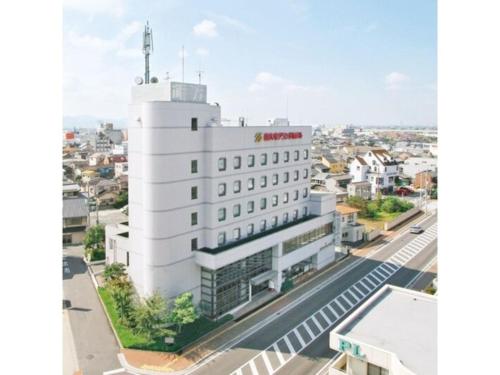Yokeiji Temple
menuMenu
A historic temple founded in 749, revived in the Heian period by Ennin (Jikakudaishi). It boasts numerous highlights, including the main hall and a seated statue of Yakushi Nyorai, both designated as Important Cultural Properties.






Highlights
- A historic temple founded in 749
- Revived in the Heian period by Ennin (Jikakudaishi)
- Main hall designated as an Important Cultural Property
- Wooden seated statue of Yakushi Nyorai from the Heian period
- Adjacent Toyohara Kitajima Shrine, preserving the syncretism of Shinto and Buddhism
Basic Information
- Address
- 1187 Kitajima, Oku-cho, Setouchi City, Okayama Prefecture Search for tourist attractions in Okayama
- Access
- 20-minute walk from Ōtomi Station on the JR Akō Line. 15-minute walk from the Kami-dera entrance on the Tōbi Bus. About 5 minutes east from the Saijo IC on the Okayama Blue Line. About 5 minutes west from the Setouchi IC on the Okayama Blue Line. Access via Okayama Prefectural Road 224 (Sesei-Daiji Line) and Okayama Prefectural Road 69 (Saijo-Bizen Line). Show route
- Op.Hours
- 8:00 AM to 5:00 PM
- Cld.Days
- Open every day
- Fee
- 300 yen for adults, free for high school students and younger
- INFO
- The principal image, Senju Kannon Bosatsu (the Thousand-Armed Kannon), is unveiled once every 33 years. The next unveiling is scheduled for 2041 (Reiwa 53).
Overview
Recommended nearby attractions
Henjo-in Temple

A serene and beautiful temple where you can feel the history of the Heian period. Its three-story pagoda, a designated Important Cultural Property of Japan, is a must-see.
Yashima-ji Temple (84th Temple, Nanmenzan Senko-in)

The 84th temple on the Shikoku Pilgrimage, located on Yashima Island in the Seto Inland Sea. Enjoy breathtaking views of the magnificent Seto Inland Sea.
Otakiyaman Fukushouji Temple

Discover captivating historical structures, including a designated Important Cultural Property: a three-story pagoda built during the Muromachi period.
Negoroji Temple

An ancient temple nestled in the middle of Goshikidai, associated with Kobo Daishi and Jizo Daishi. Don't miss the Senju Kannon statue, unveiled once every 33 years.
Tenchuzan Raikyu-ji Temple

Experience the beauty of a karesansui (dry landscape) garden designed by Kobori Enshu!
Iyama Hōfuku-ji Temple

A famous temple where Sesshū, a Zen monk and painter of the Muromachi period, trained. Known for its stunning autumn foliage.
Shido-ji Temple

A temple where you can enjoy history and nature while feeling the sea breeze of the Seto Inland Sea.
Chohuku-ji Temple

Boasting the oldest wooden structure in Okayama Prefecture, a three-storied pagoda designated as an Important Cultural Property of Japan!
Shirafune-ji Temple

Shirafune-ji Temple, known as the 81st temple on the Shikoku Pilgrimage, is a historic and naturally beautiful temple situated on a tranquil mountain overlooking the Seto Inland Sea. It houses the mausoleum of Emperor Sutoku and Shirafune Daigongen, which enshrines Sagamobo Tengu, one of the Eight Tengus of Japan.
Myohonji Temple

This temple flourished as a base for the propagation of Nichiren Buddhism in western Japan. A highlight is its Banshindo hall, an Important Cultural Property of Japan dating back to the Momoyama period.
Nearby Hotels
SAIDAIJI GRAND HOTEL - Vacation STAY 92824

Pension Pokke

Lumiere De Bonnart

Pension KUROSHIOMARU

